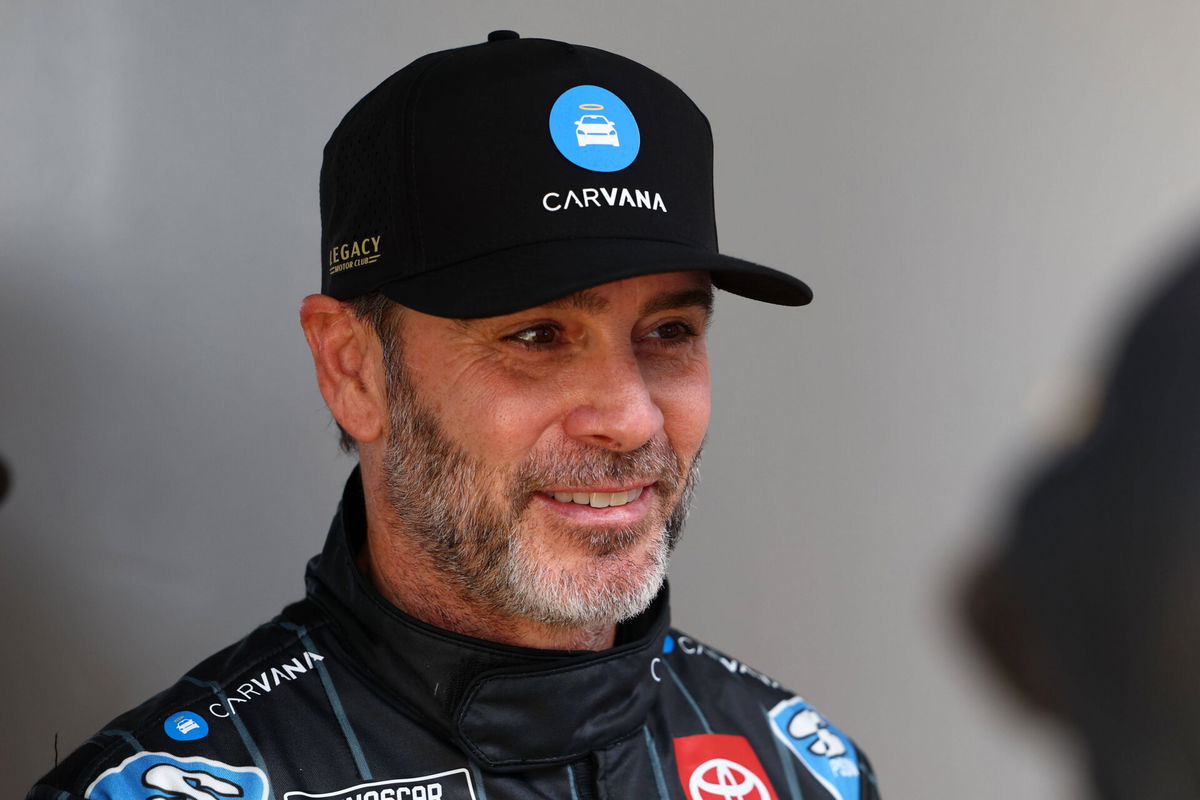
Imago
NASCAR, Motorsport, USA DAYTONA 500 Feb 16, 2025 Daytona Beach, Florida, USA NASCAR Cup Series driver Jimmie Johnson 84 walks to the drivers meeting before the Daytona 500 at Daytona International Speedway. Daytona Beach Daytona International Speedway Florida USA, EDITORIAL USE ONLY PUBLICATIONxINxGERxSUIxAUTxONLY Copyright: xPeterxCaseyx 20250216_mcd_bc1_47

Imago
NASCAR, Motorsport, USA DAYTONA 500 Feb 16, 2025 Daytona Beach, Florida, USA NASCAR Cup Series driver Jimmie Johnson 84 walks to the drivers meeting before the Daytona 500 at Daytona International Speedway. Daytona Beach Daytona International Speedway Florida USA, EDITORIAL USE ONLY PUBLICATIONxINxGERxSUIxAUTxONLY Copyright: xPeterxCaseyx 20250216_mcd_bc1_47
In a sport where success stories often start from humble beginnings, legends like seven-time champion Jimmie Johnson often look back to where it all began. He debuted in 2002, and in that year, he shared rookie meetings with drivers who crossed the ocean to participate in NASCAR for the first time. That shared tension, from meeting rooms to intimidating ovals like Dover, forged an unforgettable bond, which, after more than two decades, pulled the forgotten pioneer back into the conversation. As NASCAR eyes fresh horizons, these early nerves remind us how bravery turns rookies into icons.
Watch What’s Trending Now!
Today, that spirit ignited again across the Pacific, with Johnson himself racing at Fuji Speedway alongside John Hunter Nemechek for a demo race last weekend. Yet amid the cheers, a quiet reunion stirs deeper memories of those first heart-pounding laps. What happens when two old rookies finally swap stories?
ADVERTISEMENT
A rookie’s bold leap into an unfamiliar world
On Super Taikyu TV, Jimmie Johnson talked with Hideo Fukuyama, Japan’s first-ever NASCAR Cup driver, to unpack their shared 2002 debut at Dover Motor Speedway. Johnson, also a rookie that year with Hendrick Motorsports, recalled the pre-race huddle where Fukuyama’s presence stood out. “Yes, I remember meeting in Dover, Delaware,” Johnson said. “Dover is probably one of the most intimidating tracks on the NASCAR circuit. And his bravery to show up and compete at one of the most difficult tracks for the very first time was very impressive.”
Fukuyama qualified for the MBNA All-American Heroes 400 in the No. 66 Ford for Haas-Carter Motorsports and became that historic figure. In that debut race, Fukuyama finished 39th after facing transmission problems. Johnson, also a rookie that year with Hendrick Motorsports, recalled the pre-race huddle where Fukuyama’s presence stood out.
That Dover’s intimidation was felt strongly by Fukuyama, who is a veteran of Japanese series like Super GT and the 2000 Le Mans GT winner, and participated in exhibition runs at Suzuka and Motegi before tackling Cup. Dover’s concrete surface with high banks and blistering speeds nearly broke Fukuyama before the green flag. “Before the race, I thought about crying and just going home,” Fukuyama admitted, his words capturing the isolation of being the lone Japanese qualifier in a field of 43.
ADVERTISEMENT
View this post on Instagram
Johnson nodded to that breakdown, where he admitted being concerned for the Japanese driver’s first time racing at this monster. He said, “I did! (show concern) Yes, very. It was his first NASCAR race. And the track is so frightening, it’s so fast.” Both finished outside the top 30 that day, but Fukuyama’s grit carried him to three more Cup starts, with his best performance being 33rd at Las Vegas. Proof that Dover‘s terror added some experience to Fukuyama’s run.
ADVERTISEMENT
Now, two decades on, Fukuyama’s story feels refreshing and makes fans remember the good ol’ days when racers crossed borders to chase thrills. At the Fuji demo, stars like Kamui Kobayashi echoed that pioneer spirit, with the ex-F1 podium finisher pushing for more. “If you bring it to Japan, I think people will be impressed with the sound,” Kobayashi said. “There’s a big opportunity to bring NASCAR to Japan. I think many people are looking forward to watching the Cup car.”
Kobayashi made his own Cup debut in 2023 at Indianapolis, but his words reflect Fukuyama’s path, which showed how one man’s nervy decision to race in NASCAR opened doors for Japanese talents to chase the American dream without any hesitation. As these cross-continental threads weave tighter, Johnson’s reflections point to timeless lessons in the garage.
ADVERTISEMENT
Honoring Johnson’s blueprint
Chase Elliott, the 2020 Cup champ and Hendrick teammate to Johnson for years, often highlights his senior for inspiration when talking to young fans. In a 2014 chat with analyst Jeff Gluck, Elliott laid it out plain: “Obviously, I point to Jimmie (Johnson) a lot. It’s hard to not strive to be like that guy. He does everything right, you know? He’s successful on and off the racetrack, and he gets the job done every week, no matter what track we’re going to.”
That praise hits home, given Johnson’s 83 wins and seven titles, including five straight from 2006 to 2010, and he achieved all these without making any major negative headlines and by staying clean and consistent.
Elliott’s own 2025 season, where he finished eighth in points with wins at Atlanta and Kansas, often tries to mirror Johnson’s steady hand and mindset. Watching Johnson up close taught him balance: dominate the ovals, but also build real connections off-track, from charity runs to global demos.
ADVERTISEMENT
For kids dreaming of NASCAR helmets, Elliott sees Johnson as the full package to make a perfect role model. And Johnson’s NASCAR career is proof that hard work and consistency often lead to a Hall of Fame induction.
ADVERTISEMENT
ADVERTISEMENT
ADVERTISEMENT

